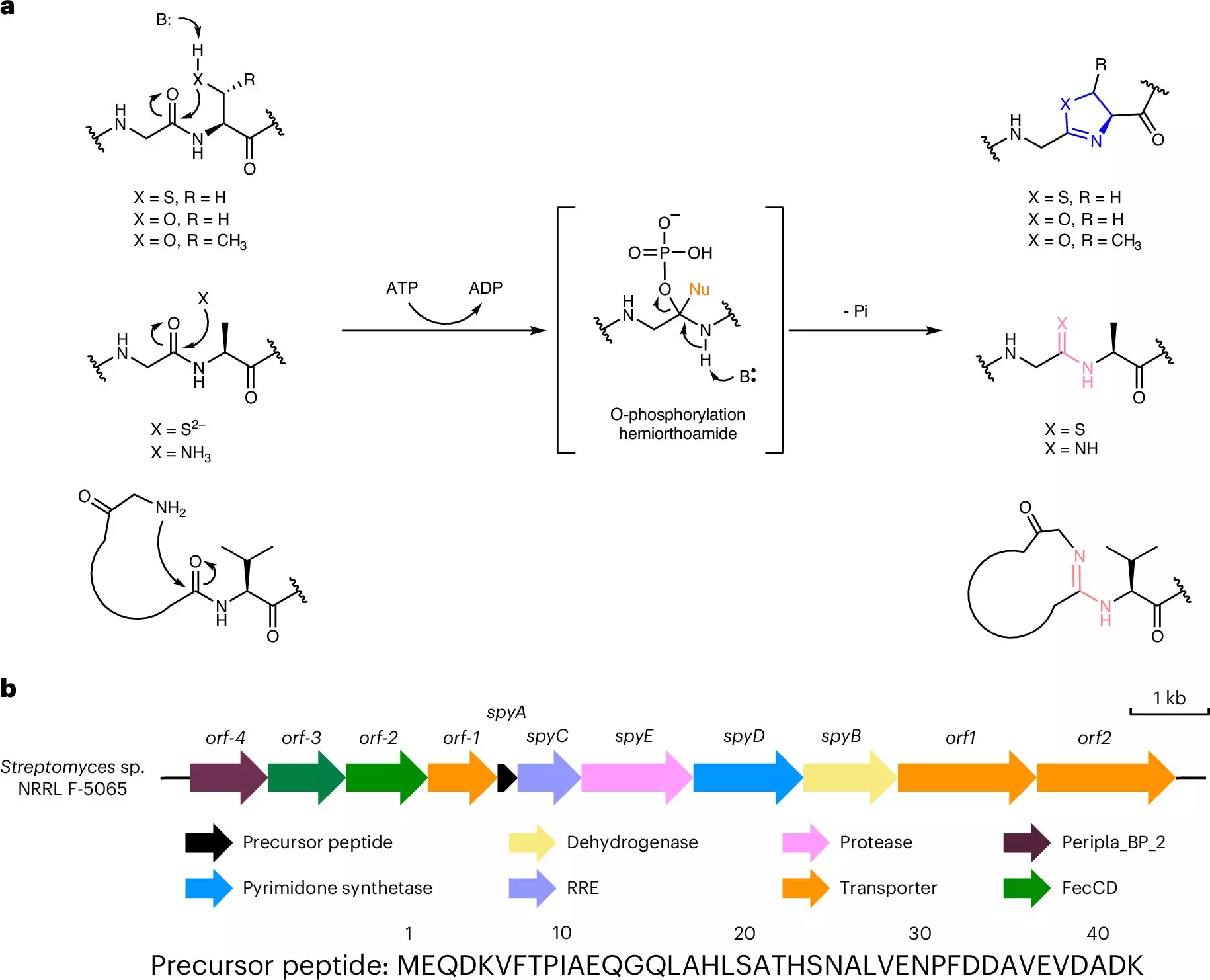The field of biotechnology is on the verge of a groundbreaking advancement thanks to a fortuitous scientific revelation that intertwines the worlds of DNA and proteins. Through innovative research efforts, scientists have unveiled methods to create biohybrid molecules that combine the unique properties of nucleic acids and proteins. This integration, instead of relying solely on traditional synthesis methods, opens up new avenues for the production of therapeutic agents, providing hope for tackling various diseases.
At the heart of this advancement lies the innate characteristics of two fundamental biological components: nucleic acids—essential for the formation of RNA and DNA—and amino acids, which form the building blocks of proteins. Satish Nair, a leading biochemist from the University of Illinois Urbana-Champaign, along with his research team, has spent years exploring the possibilities of combining these two realms. Historically, chemists have faced significant hurdles in merging these distinct molecular structures due to their disparate functions and complex behaviors.
Nair highlights the immense potential of creating hybrid molecules that can address specific biological targets. For instance, by equipping a protein with DNA elements, it is possible to direct the molecule precisely to its site of action, ultimately developing precision drugs. Such innovations could revolutionize the way diseases, such as cancers driven by mutated genes, are treated by offering targeted interventions at the molecular level.
The journey towards unveiling these biohybrid molecules began with an unexpected twist of fate. While initially investigating proteins known for metal-binding capabilities, Nair’s team stumbled upon a tantalizing report from the John Innes Centre in Norwich, England. The report described a bacterially derived molecule that exhibited hybrid characteristics between DNA and proteins. Recognizing the significance of this find, Nair reached out to the researchers behind the discovery, Natalia Vior and Andrew Truman, sparking a collaborative endeavor to confirm and elaborate on the molecular interactions at play.
As the collaboration unfolded, deeper insights were gained into the mechanisms that allow bacteria to produce these hybrid molecules naturally. This profound understanding has the potential to alleviate the laborious and often inefficient synthetic processes currently employed in laboratories globally. Transitioning to a more efficient method—through bacterial synthesis—can facilitate the rapid development of vast libraries of biohybrid compounds, significantly transforming drug discovery timelines.
The pivotal discoveries made by Nair and his team revealed that two specific bacterial enzymes are integral to the transformation of peptides into DNA-protein hybrids. The first enzyme, known as YcaO, initiates the process by modifying an amino acid, leading to the formation of a ring structure critical for DNA and RNA interaction. Subsequently, a protease enzyme trims the modified peptide, resulting in a functional hybrid molecule ready for further biological interaction.
In practical applications, this conversion can occur in vitro with minimal components, requiring only the original peptide and the two enzymes. Remarkably, the researchers have demonstrated that the common bacterium E. coli is capable of carrying out this process, signifying a paradigm shift in how hybrid molecules can be produced at scale. Such advancements could drastically reduce the time and resources needed to explore new therapeutic avenues.
The implications of Nair’s findings extend far beyond mere academic curiosity. The ability to generate vast libraries of biohybrid molecules quickly could aid in the development of novel drugs that target specific genes or RNA molecules implicated in various diseases. By bypassing many of the traditional synthetic challenges, researchers can now focus on identifying and optimizing new therapeutic candidates with unprecedented efficiency.
As Nair eloquently puts it, “Now, we’re off to the races.” The momentum gained from this work suggests a promising future for personalized medicine, where drugs are tailored to affect precisely the troublesome molecular targets that drive disease states. The collaboration with global research communities holds the potential to transform not only our understanding of molecular interactions but also translates this knowledge into substantial public health advancements.
The fusion of DNA and protein building blocks into biohybrid molecules represents an exciting frontier in biomedical research. The integration of existing molecular processes used by bacteria offers a feasible and scalable approach to drug design and development. With the continued exploration of these hybrid molecules, researchers may soon usher in a new era of precision medicine that fundamentally changes how we approach disease treatment and unravel the complex biological systems within our bodies.

